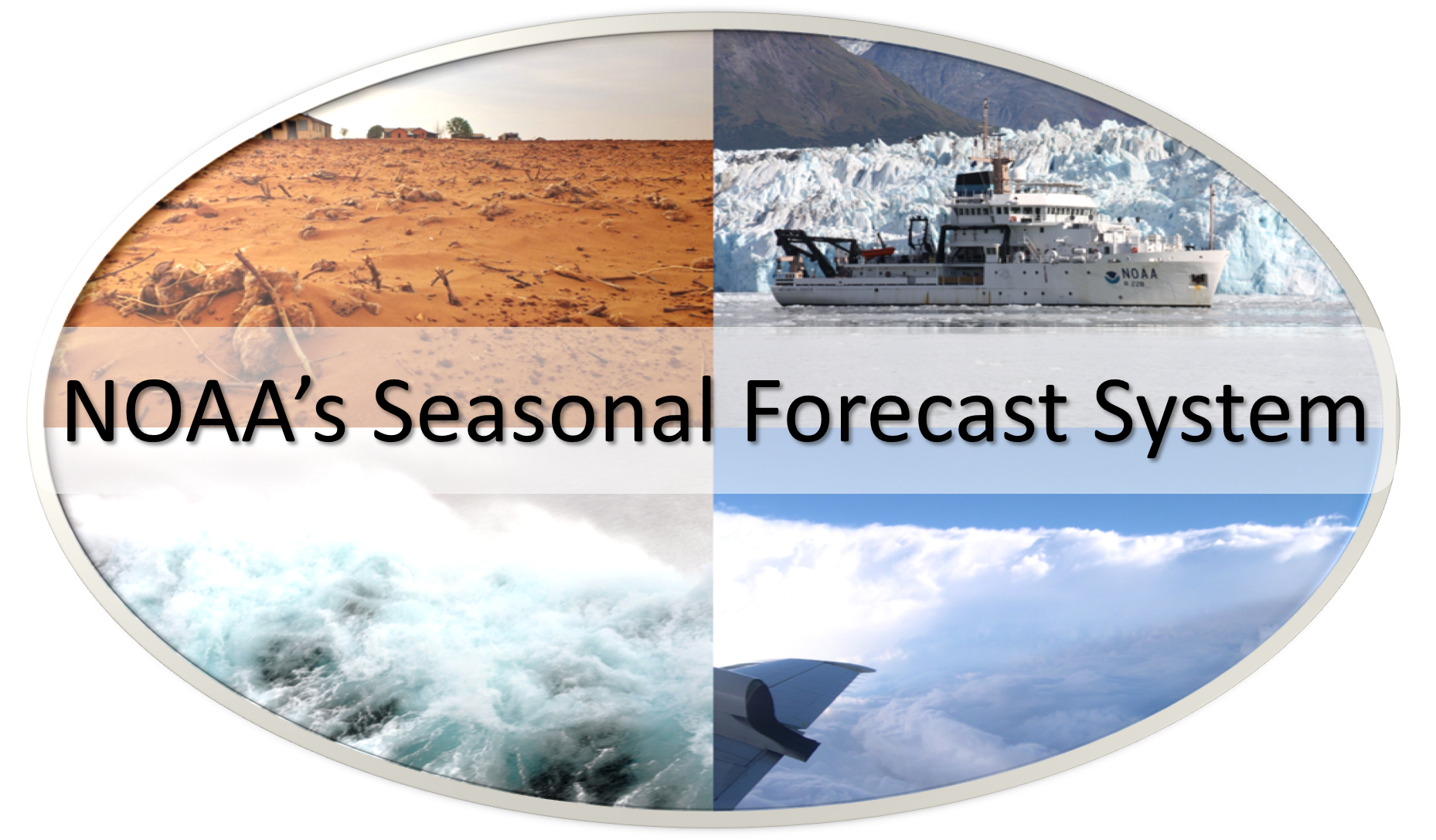Seasonal Forecast System - UFS R2O

The NWS Office of Science and Technology Integration (OSTI) Modeling Program and the OAR Weather Program Office (WPO) Subseasonal-to-Seasonal Program are jointly supporting the SFS development project. A SFS development plan has been drafted with a goal to build SFS v1 as a replacement of the more than one decade-old Climate Forecast System version 2 (CFSv2). The SFSv1 will build upon and extend the capabilities of the NOAA Global Ensemble Forecast System (GEFS), building upon GEFSv13 which is currently in development and testing, for extended range forecasting. The GEFS system already contains components describing the atmosphere, oceans, waves, land, cryosphere and aerosols. The GEFSv13 coupled model will be a part of NOAA’s Unified Forecast System (UFS), consisting of the FV3 dynamical core for the atmosphere, the Common Community Physics Package (CCPP) for atmospheric physics, MOM6 for the ocean, GOCART for aerosols, CICE6 for the sea-ice, Noah-MP for land, and WW3 for waves.
The SFS system incorporates an ambitious development plan, across various NOAA offices in collaboration with partners and stakeholders. As such, SFS development has been divided into ten tasks, with team leads and expertise focused on submilestones within each task. These tasks are:
- Task 1: SFS Design, Testing and Analysis
- Task 2: Physics and Dynamics Improvement
- Task 3: UFS land model improvement
- Task 4: Ocean, Waves and Sea-Ice Model Improvements
- Task 5: UFS Aerosol and Atmospheric Composition Improvements
- Task 6: Coupled Ensemble Strategies, Design and Development
- Task 7: Coupled Data Assimilation Developments and Observation Processing
- Task 8: SFS Reanalysis and Reforecast
- Task 9: SFS Infrastructure and Cloud Strategy
- Task 10: Product developments and Verification
The team will improve physical descriptions of slowly changing processes on the land, in the oceans, for sea ice, and for atmospheric composition. Data assimilation will be improved to provide accurate initial states for the land, ocean and sea ice in the SFS component models that provide the long-term memory of the Earth System. A historical reanalysis and reforecast will also be performed for model calibration and to further improve seasonal forecast outlooks along with post-processing methods.
Through the SFSv1, the NWS will provide enhanced seasonal predictions for precipitation, drought, temperature, tropical cyclone frequency, and their extremes, for decision makers across industries in the public and private sectors.
The SFS team seeks to achieve the following outcomes:
- Produce a global coupled model using systematic testing and evaluation strategy for adding all necessary components/advancements, targeting operational configurations for SFSv1
- Improve physics parameterizations and dycore options to reduce systematic model biases, and to improve model representation of low-frequency dominant modes
- Improve land physics and interactions of land surface with atmosphere, composition and ocean components
- Improve ocean and sea ice processes, minimize long-term model drift and maintain the mass and energy conservation
- Develop an ensemble framework that realistically represents uncertainties in seasonal forecast
- Produce a full-resolution coupled reanalysis for the 1979-present period using the JEDI framework
- Conduct a full-resolution ensemble reforecast for the 1981-present period
- Develop a SFS model infrastructure and workflow that enables efficient model testing and evaluation, data assimilation improvement, reanalysis and reforecast on both on-premise and cloud HPC
- Develop an integrated METplus-based verification package for evaluating SFS prototypes, as well as operational SFS forecast
- Work with stakeholders to determine SFS products and post-processing requirements, ensure the relevant forecast fields are produced and distributed for their purposes
November 8th, 2023
Task 1: SFS Design, Testing and Analysis
Lorem ipsum dolor sit amet, consectetur adipiscing elit. Phasellus vulputate malesuada facilisis. Integer ornare, velit eu tempus lobortis, magna augue eleifend metus, pellentesque gravida lorem massa a massa. Etiam placerat libero lacus, eu aliquam urna maximus a. Integer sapien felis, ullamcorper non mauris eu, tincidunt imperdiet dui. In molestie venenatis egestas. Aliquam et viverra sapien, quis accumsan lacus. Aliquam ultrices purus ut urna fringilla sodales.

